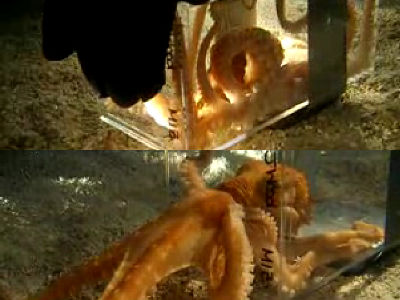How does Teppo Webbi, who incapacitates its prey with 'plasma shock waves', protect itself?

by
The shrimp family, Alpheus brevicii , is capable of vigorously colliding with scissors and emitting plasma shock waves, which incapacitate and prey on prey. New research has revealed the mechanism by which Teppo Webbi protects itself from such super-powerful shock waves.
Snapping shrimp have helmets that protect their brains by dampening shock waves: Current Biology
https://www.cell.com/current-biology/fulltext/S0960-9822(22)01004-1
Snapping shrimp orbital hood protects against shockwave blasts
https://phys.org/news/2022-07-snapping-shrimp-orbital-hood-shockwave.html
Teppo Webbi can emit a shock wave with a 'click' sound by vigorously colliding the scissors. This shock wave is known to be powerful enough to stop the behavior of prey or even kill it. The moment when Teppo Webb actually emits a shock wave can be confirmed from about 3 minutes 23 seconds in the following movie.
Feeding shrimp that emit shock waves over 4000 ° C ... --YouTube
As mentioned above, the shock wave emitted by Teppo Webbi is extremely strong. However, it has not been observed that the shock wave emitted by Teppo Webbi affects fellow Teppo Webbi or the individual who emitted the shock wave itself, and it is said that Teppo Webbi suppresses the influence of the shock wave in some way. It was being considered. A research team at the University of South Carolina conducted experiments on 60 Alpheus brevicii to clarify the shock wave avoidance mechanism of Alpheus brevicii.
Around the eyes of Alpheus brevicii, there are helmet-like organs that cover the eyes. The research team cut out a helmet-like organ from the teppoebi and observed changes in behavior. As a result, although there was no change in normal behavior other than when preying on food, special reactions such as 'rotating' and 'stuck' were observed when a shock wave was emitted to prey on food. rice field. In addition, after emitting a shock wave, he showed a fluttering and lost movement when returning to the burrow.

Furthermore, a detailed analysis of the helmet-like organ revealed that the water pressure inside the organ was higher than that at the outside. Furthermore, it was found that the helmet-like organ had a small hole, and when it was impacted, water was drained from the hole to flush the impact. From these results, the research team concludes that 'Alpheus brevicii is a helmet-like organ that covers the eyes and is parrying shock waves.'
The research team positions the results of this research as 'the first research to discover a biological armor system that protects the head and eyes from shock waves.'
Related Posts:







